Jonestown Massacre: Humanizing the members of Peoples Temple 45 years later
Archived KTVU footage of the five-year anniversary of the Jonestown massacre
This archival footage on the fifth anniversary of the Jonestown massacre looks back on Peoples Temple and what led to the death of nearly 1,000 of its members. WARNING: THIS FOOTAGE CONTAINS DISTURBING VISUALS.
LOS ANGELES - Forty-five years ago this week, 918 people died in a mass murder-suicide orchestrated by the Rev. Jim Jones at a jungle settlement in Guyana, South America – a horror that remains nearly unimaginable to this day.
Dozens of Peoples Temple members survived because they had slipped out of the settlement or, by sheer luck, happened to be away on Nov. 18, 1978.
Those raised in the temple or who joined as teens lost the only life they knew: Church, jobs, housing – and most of all, family and friends.
Jonestown was the largest mass murder of American civilians until the terrorist attacks of Sept. 11, 2001.
Jones, who was known as a vile yet charismatic figure, managed to use a message of social justice to form his racially-integrated congregation which attracted mostly Black followers.
What was Peoples Temple?
Peoples Temple was originally founded by Jones in Indianapolis in the 1950s before he moved it to Northern California in the late 1960s. The Temple’s headquarters was eventually established in San Francisco and then later in Los Angeles before the establishment of the Jonestown settlement in Guyana. It was initially founded on principles of racial integration parallel to the ongoing civil rights movement of the time.
It quickly gained popularity for its community services and social justice advocacy. However, as Jones’ leadership became increasingly authoritarian, the organization shifted towards a cult-like structure.
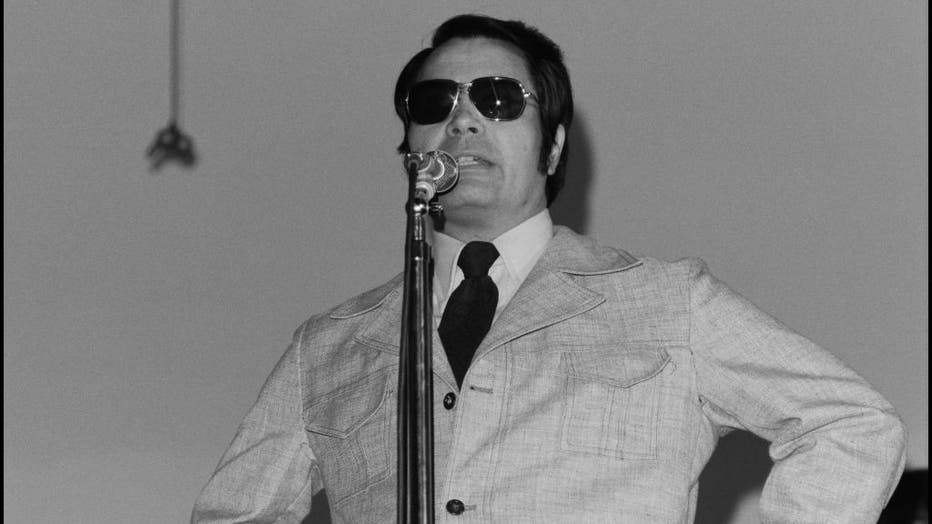
American cult leader and founder of the People's Temple (formally known as the Peoples Temple of the Disciples of Christ) Jim Jones speaks at Glide Church, San Francisco, California, November 1975. (Photo by Janet Fries/Getty Images)
The early goals of the temple included creating a community where people of all backgrounds could live together in harmony and free from the societal divisions and inequalities happening in the United States.
In the 1970s, seeking refuge from mounting legal and media scrutiny, Jones and Peoples Temple established an agricultural settlement with the vision of a utopian society in the remote jungle of the only English-speaking country in South America.
On Nov. 18, 1978, on a remote jungle airstrip, gunmen from the group ambushed and killed U.S. Rep. Leo Ryan of California, three journalists and a defector from the group – all of whom were visiting Jonestown on a fact-finding mission to investigate reports of abuse of members.
Jones then orchestrated a ritual of mass murder and suicide, ordering followers to drink cyanide-laced grape drink. Most complied, although survivors described some people being shot, injected with poison, or forced to drink the deadly beverage when they tried to resist.
What life was like in Jonestown
There’s a reason the FBI and several other agencies launched investigations into Peoples Temple.
According to the FBI’s website, the refuge was closer to a slave camp than a religious getaway.
"There was talks of beatings, forced labor and imprisonments, the use of drugs to control behavior, suspicious deaths and even rehearsals of a mass suicide," the FBI writes on its website.
The people of Jonestown had set up camp 125 miles away from the capital of Guyana, Georgetown, and were given a 99-year lease for nearly 4,000 acres of land. Members spent two years clearing forests, building buildings, and setting up infrastructure – which made them have a true sense of purpose, according to historical records.
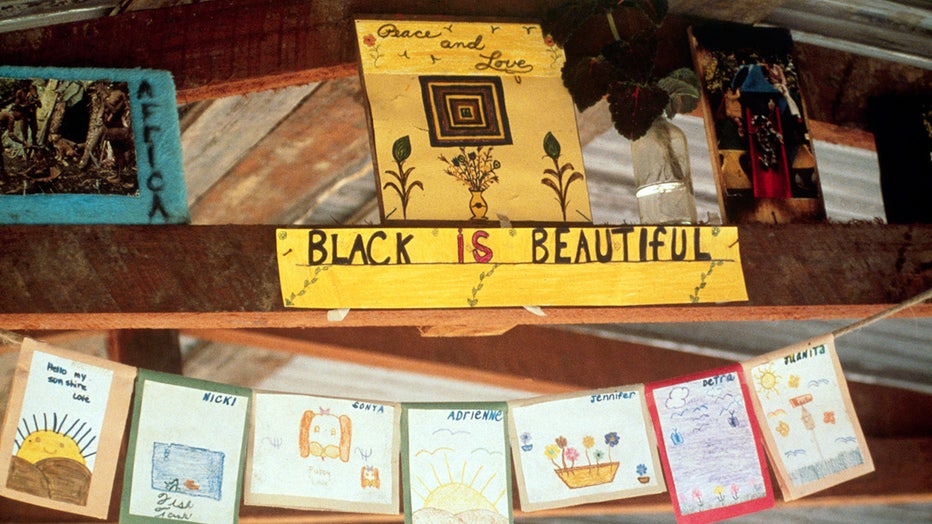
Cards and pictures made by the children of members of the People's Temple in Jonestown, Guyana. (Bettmann / Contributor via Getty Images)
Fielding McGehee, the principal researcher for the Jonestown Institute, says the purpose of Jonestown was to establish a creative community with dozens of young men working 10 to 12 hours a day. Jones quickly demanded more and more of his people but it quickly became overpopulated and the possibility for a long term, self-sustaining community became less and less practical.
While living conditions quickly deteriorated and life became less and less normal, the possibility of death did not.
"Eventually people in Jonestown just accepted death as a part of the conversation," McGehee told FOX Television Stations.
"There’s a tape from the end of October and a woman – I think we’ve identified her – she comes to the microphone, she says, ‘I’m 28 years old and I’m ready to die tonight.’ My feeling was that’s a suicide note and it just took her three weeks for the body to fall down," McGehee said.
It might seem unfathomable that nearly 1,000 people could commit such an atrocious act with outsiders writing off their actions as brainwashed members of a notorious cult.
But what makes comprehending Jonestown so much more difficult is coming to terms with the fact that the people who died that day were mothers, fathers, daughters and sons. They had ideals and goals that were eventually twisted and poisoned by their charismatic leader.
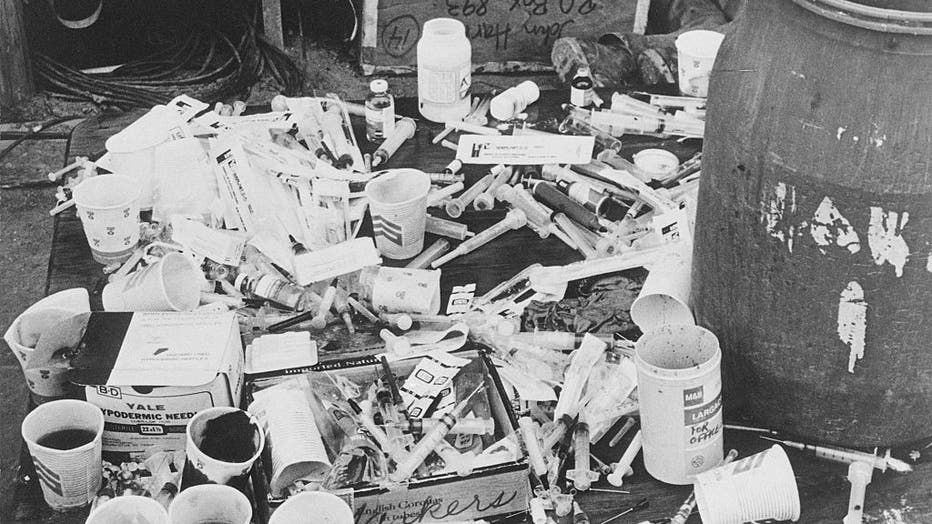
A pile of paper cups with cyanide-laced fruit punch, and a pile of hypodermic syringes, found at Jonestown by Guyanese officials.
In order to understand Peoples Temple and why hundreds of people would commit suicide in the jungles of South America, it’s important to understand the political climate of the time.
Distrust in most U.S. institutions was on the rise following the release of the Pentagon Papers, which revealed longtime government doubts and deceit about the Vietnam War and inspired acts of retaliation by President Richard Nixon that helped lead to his resignation.
McGehee spoke with FOX TV Stations on Nov. 15 about the mass death and noted he and his wife, Rebecca Moore, joined Peoples Temple the day after the tragic incident in Guyana. They joined not because they took any active step to become a part of Peoples Temple and spread its beliefs but rather to establish the groundwork for what would eventually become the Jonestown Institute.
When they joined, they, like many others, had difficulty coming to terms with the fact that parents in the organization would willingly kill their own children at the behest of Jones.
McGehee said when his wife met Jones, she wasn’t impressed and never considered joining before. They had an opportunity to become members and visit Jonestown in May 1978, several months before the killings. But when the temple learned McGehee and his wife were reporters, they asked them to sign waivers that they were not allowed to report on anything they saw.
The day after the killings, when they saw what had happened in the newspaper, they joined in order to act as a liaison between surviving temple members living in the U.S. and federal authorities. Upon learning of the killings, their first act was to file freedom of information requests and to do what they could to truly get answers as to what happened that day.
In their minds, there had to be some sort of foul play by the government.
‘Our pastor’: Meeting Jim Jones
Rebecca Moore had two sisters, Carolyn and Annie, who found leadership roles within Peoples Temple.
Carolyn Moore Layton was married to Larry Layton, a Jones loyalist who shot U.S. congressman Leo Ryan while under the guise of wanting to leave Jonestown. Layton was later convicted and sentenced to life in prison.
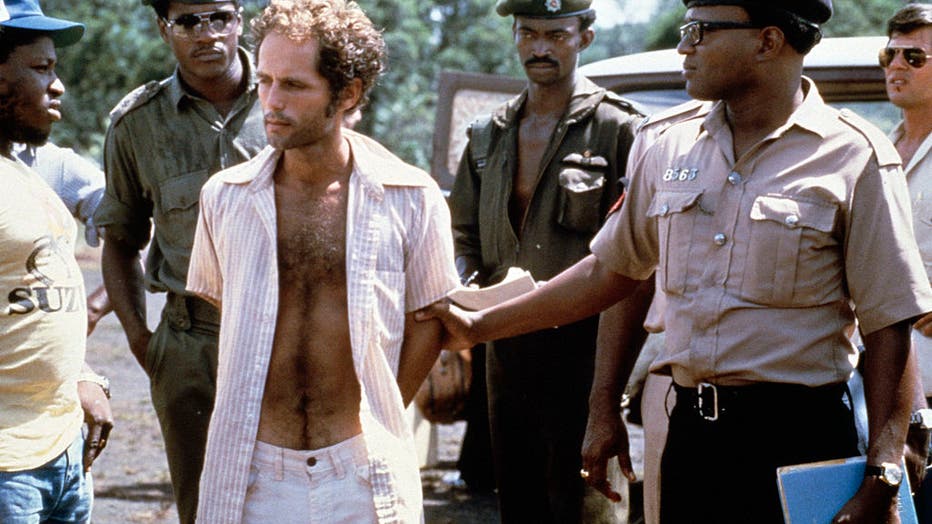
People's Temple follower Larry Layton stands with police following his arrest November 18, 1978 in the shooting of two people on a remote Guyana airstrip. (Photo by David Hume Kennerly/Getty Images)
According to McGehee, Rebecca’s family was reluctant to accept that their daughters had joined this controversial religious group.
In a personal account on the Jonestown Institute’s website, Rebecca’s father, John Moore, shares the moment he learned his daughter Carolyn had joined Peoples Temple and the first time he met Jim Jones.
In the letter, Rebecca’s father writes about how his daughter first found Peoples Temple in Ukiah, California, a small town in Northern California and the headquarters before moving to San Francisco.
"About that time, they (Carolyn and Larry) met a number of young adults who were excited about their church and invited Larry And Carolyn to visit. That’s all it took. A month or so later, Carolyn wrote us an enthusiastic letter in which she said ‘Our pastor said this and our pastor said that.’ I replied that I was more interested in what they thought than what the pastor said. The church, of course, was Peoples Temple, and the pastor was Jim Jones," John Moore wrote.
Their contact with Carolyn became sporadic but they eventually met Jones when he came over for dinner to Rebecca’s family home.
"A while later Carolyn said that she wanted to call Jim Jones to come over to meet us. When Jim arrived, Becky and Annie went outside to swing on a rope hanging from a big tree. As I remember, Carolyn told us that she loved Jim Jones, that his wife Marceline could not satisfy Jim’s sexual needs. The first thought that passed through my mind was, ‘Oh God, another Elmer Gantry.’ Carolyn continued when Jim interrupted, saying, ‘I told you that they wouldn’t understand.’ Carolyn was broken-hearted by our response. Jim excused himself. We all hugged Carolyn, said our goodbyes and headed back to Davis," John Moore wrote.
Carolyn had divorced Larry a month before that dinner. She would go on to have a child with Jones, named Jim Jon (Kimo) Prokes. Kimo was 3 and among several children who died during the murder-suicide.
Archived KTVU footage of Jim Jones' final words
In this archival footage of a KTVU segment on the Jonestown massacre, a recording is featured of Jim Jones telling his followers to commit suicide. WARNING: SOME VIEWERS MAY FIND THIS CONTENT TO BE DISTURBING.
How is it that after a few months of joining Peoples Temple, Carolyn was filing for divorce from her husband to have a sexual relationship with Jones? And how is it that several years later these people would commit ritualistic suicide in the jungle?
These are the answers that McGehee and his wife Rebecca wanted when they decided to join.
How do you make sense of something like this?
Conspiracy theories of government involvement spread like wildfire even before the final body count could be established. At first, McGehee explained that there was concern of CIA involvement in the deaths of Peoples Temple members.
One of the many lies Jones told his followers was that the U.S. government sought to destroy the work of social justice and racial integration Peoples Temple fought so hard to preserve. This became one of the motivators for people taking their own lives. Many members were willing to die for their cause.
McGehee explained that Jones used the concept of "revolutionary suicide" to poison the minds of his followers and to convince them that their lives would be sacrificed for a greater good often associated with social of political change – a tragic distortion to justify the mass murder-suicide.
Jones, who presented himself as an advocate for racial equality, had mutated the ideas of Black Panther co-founder Huey P. Newton who wrote the book "Revolutionary Suicide." Newton emphasized in the book that dedication and sacrifice were required for true social and political change.
"The enemy consisted of three elements," McGehee explained. "On any given night, Jim would talk about one of those three elements. He would talk about the government, which he talked about the CIA and the FBI. The fact is that there were government agencies who were interfering in the temple’s work. The second was the press; they felt they had been handed out of the country by the press. And the third was the disaffected members or the relatives, the people who were trying to get their children or their relatives to come home."
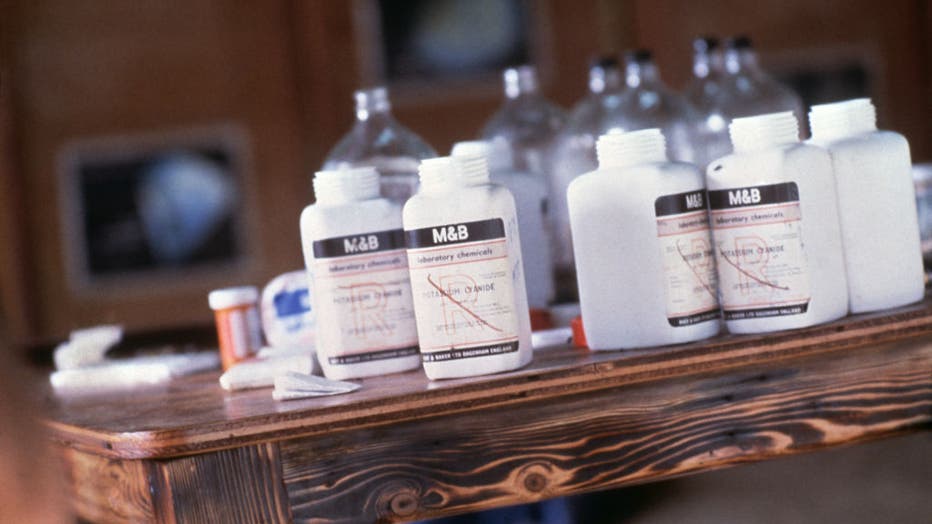
The vials of potassium cyanide used in the poisoning of worshipers at the Jim Jones Peoples Temple in Jonestown, Guyana, in November 1978.
McGehee went on to paint a picture of the terrifying regime that was Jim Jones’ Jonestown.
"During some meetings they would talk about torturing relatives. There are all sorts of graphic tapes about what they would do to the relatives if they had a chance," McGehee said.
All of these fears solidified many of the temple members’ paranoia once the U.S. government showed up.
"The real point is that during the last weekend when Congressman Leo Ryan showed up, as far as Jim Jones was concerned and as he presented to his people, the conspiracy was joined," McGehee continued. "The government was there in the form of Leo Ryan and the press was there in the form of the NBC crew and the other reporters covering the event. The relatives were there in the form of the relatives who would accompany Ryan down there."
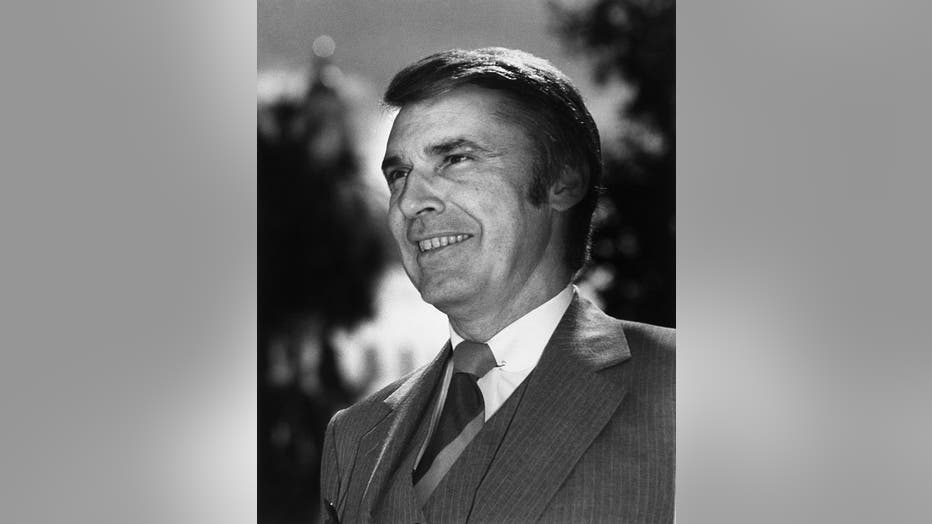
FILE - Photograph of congressman Leo Ryan.
The story continues
Over the past several decades, as survivors built new lives, they have struggled with grief and the feeling that they were pariahs. Some have come to acknowledge that they helped enable Jim Jones to seize control over people drawn to his interracial church, socialist preaching and religious hucksterism.
"I think it’s important to let people know the truth that the story of Jonestown was not a story that started on November 18th, 1978, nor did it end on November 18th, 1978. There were a thousand people who were in Jonestown who had ideals, you know, for a larger community and the church itself," McGehee said.
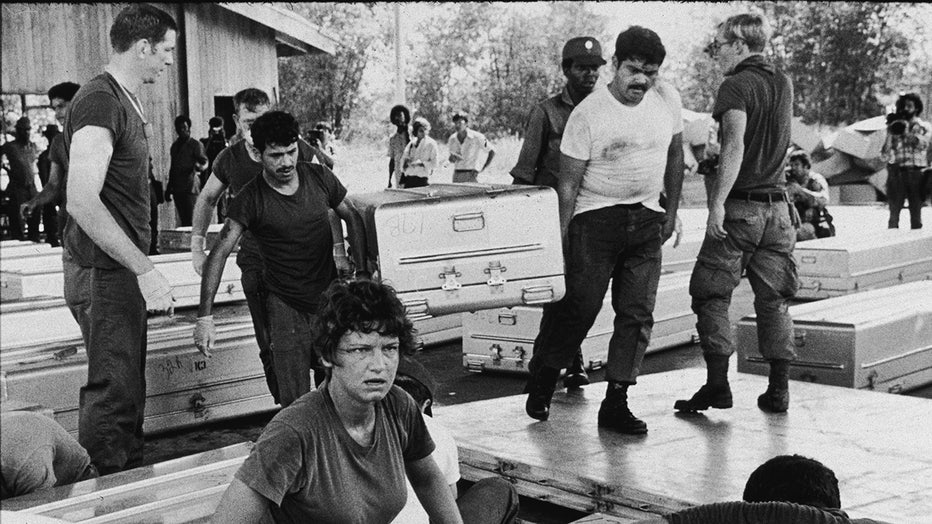
Members of a US military team prepare aluminum coffins for shipment to the United States, following the more than 900 deaths in the mass suicide staged in Jonestown, November 24, 1978. (Photo by New York Times Co./Neal Boenzi/Getty Images)
He says that, following the massacre, many people weren’t welcomed back to their families after they cut ties with them to join the cult. Many others never kept any photographs or evidence of family members who died that day.
So the Jonestown Institute website stands for many as the only true and comprehensive resource for information on victims.
"Every now and then, we'll get a message from somebody that says this site has the only photographs of my grandfather that they have ever seen. That's heartening," McGehee said. "I think that the real purpose of the site is to bring the people of People's Temple and Jonestown to life. Yeah, to show the humanity that they had, that they had ideals that they weren't a bunch of brainwashed zombies."

